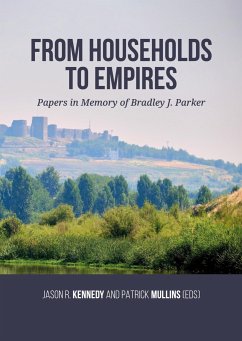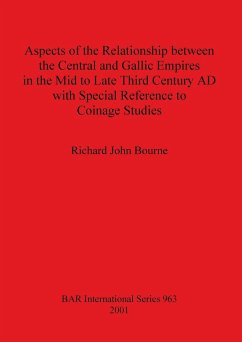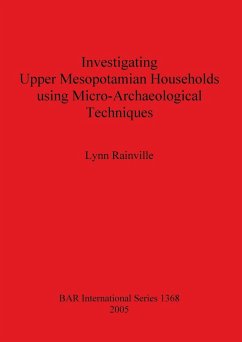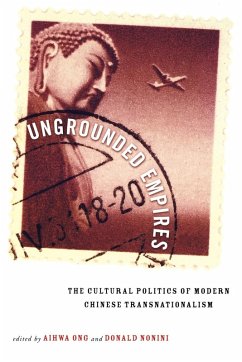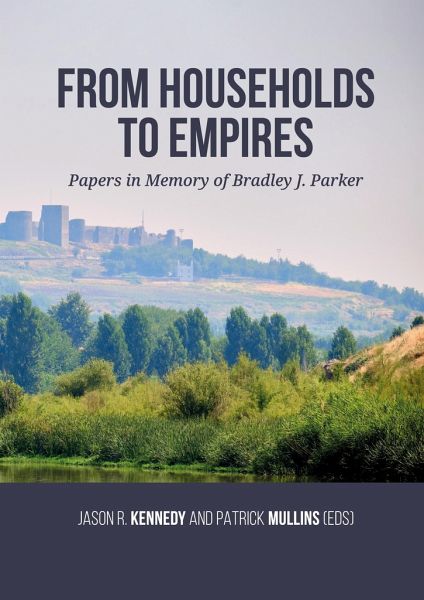
From Households to Empires
Versandkostenfrei!
Versandfertig in 1-2 Wochen
83,99 €
inkl. MwSt.

PAYBACK Punkte
42 °P sammeln!
Bradley J. Parker made numerous contributions to the field of archaeology and Assyriology on a broad array of topics spanning six millennia of archaeological history in both ancient Mesopotamia and the Andes. His varied research interests included the archaeology of empires and imperial dynamics, frontiers and borderlands, households and micro-archaeology, ethnoarchaeology, aerial drone mapping, and the politics of archaeology and nationalism.This volume contains a collection of essays from his friends, colleagues and former students that cover three broad themes: household archaeology, fronti...
Bradley J. Parker made numerous contributions to the field of archaeology and Assyriology on a broad array of topics spanning six millennia of archaeological history in both ancient Mesopotamia and the Andes. His varied research interests included the archaeology of empires and imperial dynamics, frontiers and borderlands, households and micro-archaeology, ethnoarchaeology, aerial drone mapping, and the politics of archaeology and nationalism.This volume contains a collection of essays from his friends, colleagues and former students that cover three broad themes: household archaeology, frontiers and borderlands, and the archaeology of empire. Our goal is to explore Bradley's indelible legacy in the field of archaeology and how his work will contribute to academic discourses in the future.ContentsChapter 1: IntroductionJason R. KennedyChapter 2: Whose House? An Abridged Exploration in Household ArchaeologyJason R. KennedyChapter 3: Household Activities at Ubaid Kenan Tepe: Revisiting the Burnt HouseMarie Hopwood and Jason R. KennedyChapter 4: Living with the Dead: Burial Practice at Kenan Tepe, Turkey, During the Ubaid PeriodDavid E. HopwoodChapter 5: Living Amidst the Ruins: Continuities, Interruptions, and Memory in a 5th mill. BCE Village in the Kopet Dag FoothillsSusan Pollock and Ilia HeitChapter 6: Lithics in the Household: Obsidian Use at Kenan TepeStuart Campbell and Elizabeth HealeyChapter 7: Bureaucrats and Binaries: Household Archaeologies of Indigenous Andean LeadershipScotti M. Norman and Kylie E. QuaveChapter 8: Into the BorderlandsPatrick MullinsChapter 9: The Land that Time Forgot: Five Millennia of Settlement at Çadir Hoyuk on the Anatolian PlateauSharon R. Steadman, Jennifer C. Ross and Marica CassisChapter 10: Out of the Shadow of the Texts: Reinvigorating Archaeology's Role in Ancient Nubia and Modern Egyptology Through a Borderlands PerspectiveStuart Tyson SmithChapter 11: Dynamic Frontier Processes: Examples from Jordan and PeruAaronGidding and Alicia BoswellChapter 12: Borderlands of the Moche Valley: The Chimú Phase (~900 - 1450s CE) Chaupiyunga and the Rise of ChimorPatrick MullinsChapter 13: Migration, Settlement, and Warfare in the Prehispanic Nasca Highlands of PeruWeston C. McCoolChapter 14: Imperial DynamicsMatthew J. EdwardsChapter 15: Beating Swords into Plowshares: The Role of Agricultural Colonization in Imperial HistoriesMelissa S. RosenzweigChapter 16: After DeportationAzer Keskin and Reinhard BernbeckChapter 17: Imperial Bodies: Sex and Bodily Hygiene in the Early Assyrian EmpireBleda DüringChapter 18: The Role of Institutions in Imperial Formations in the AndesPatrick Ryan WilliamsChapter 19: Inca Aesthetic and Ideological Signals in the Imperial Heartland (Cuzco, Peru)R. Alan CoveyChapter 20: Putting the Horse Before the Cart: Timelines and Cadences in Archaeological Data PublishingSarah Witcher Kansa and Eric C. Kansa



